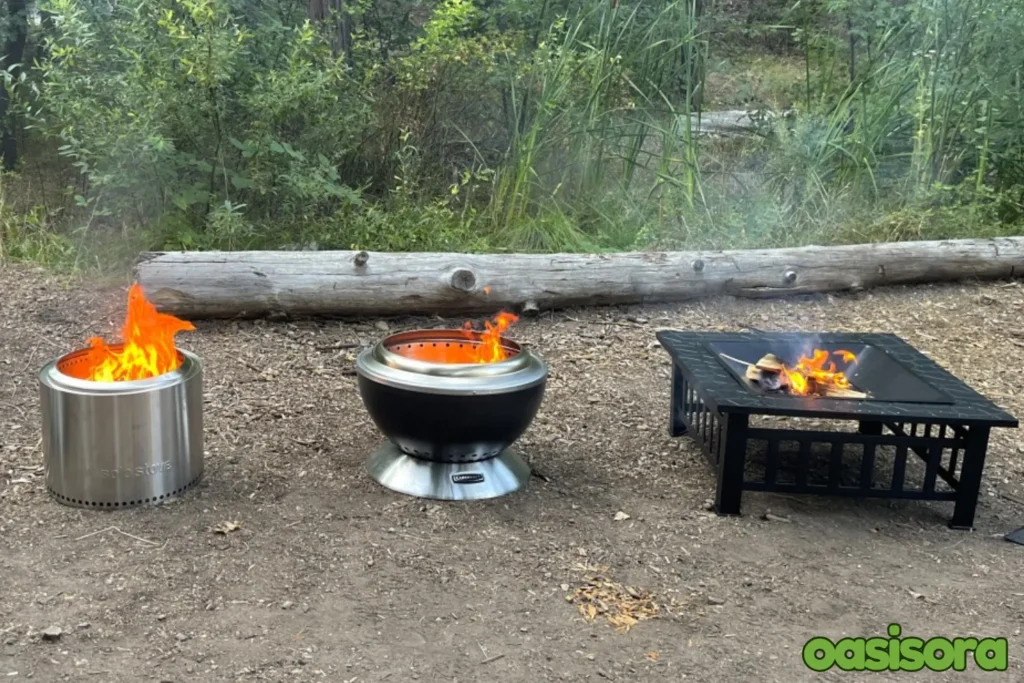
Smoky Fire Pit? Try These Tips to Reduce Fire Pit Smoke Instantly
The fire pit provides warmth and relaxation, but too much smoke makes your experience unpleasant. You have to suffer the heat rather than enjoy it. Fortunately, there are easy solutions to this issue, so you may want a fire free of smoke.
The Quick Answer: Key Steps to Reduce Fire Pit Smoke
Nothing is worse than sitting around a fire pit with smoke blowing everywhere. You can solve this issue by taking appropriate measures. A gas or propane fire pit is the ideal fire pit choice to simplify your fire pit experience.
These are found in numerous forms, including square, round, rectangle, or even a unique design created especially for your outside area.
But if you favour regular fire pits and want to enjoy the outdoors with smoke. Here are some quick and easy tips to reduce fire pit smoke and enjoy a clean fire burn:
- Always use dry wood because wet or newly cut wood makes more smoke. Therefore, dry and old hardwoods like oak or maple are best to use.
- Stack your wood correctly so that air can flow through it.
- Clean out your fire pit regularly to remove old ash and other junk.
- Do not burn wet wood, leaves, or treated wood because they give off extra smoke and harmful fumes.
- Don’t put too many logs together because fire needs air to burn cleanly so there must be a place for air to pass.
These guidelines will help you enjoy your fire pit free of annoying smoke clouds.
Tip 1: Always Use Dry, Seasoned Wood
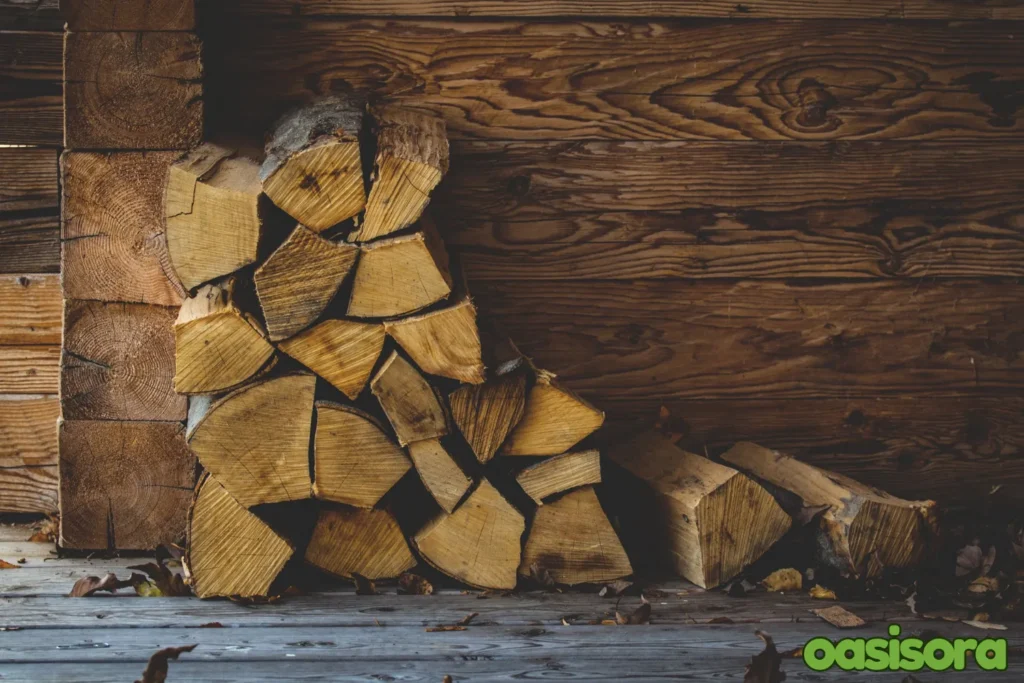
Dry Seasoned Wood
A big reason why fire pits make too much smoke is that the wood isn’t dried enough. So the fire must dry the wood first and then make a clean flame. Wet wood doesn’t work well and produces more smoke.
Always use dry, seasoned wood to reduce fire pit smoke. Woods takes several months to dry out completely, and when it is dry the water inside drains on its own. As a result, it produces less smoke, hot burns, and simple lighting.
The simple way to find your seasoned wood is:
- It should be light in weight.
- It should have some cracks on the surface to show it has dried well.
- When two pieces kick together, they should sound sharp rather than a dull thud.
Making sure your wood is dry enough can help the fire to be cleaner and generate less smoke, which improves the comfort and coziness of your time outside.
Tip 2: Clean Your Fire Pit Regularly

Clean Your Fire Pit Regularly
Do you know that smoke is a result of a filthy fire pit?.
Ashes and residual wood waste build-up, block ventilation, which increases the difficulty for the fire to burn effectively. Fires burn slower and generate more smoke under inadequate oxygen.
After every few uses, you should clear your fire pit. Extra wood pieces and ash can be removed with a small pan or an ash scoop.
Remember that ashes can remain hot for hours after the fire is out; so be sure you discard them carefully in a metal container. Keeping a clean fire pit lets air flow more naturally, which burns the wood correctly and produces less smoke.
Tip 3: Stack Wood Properly for Maximum Airflow
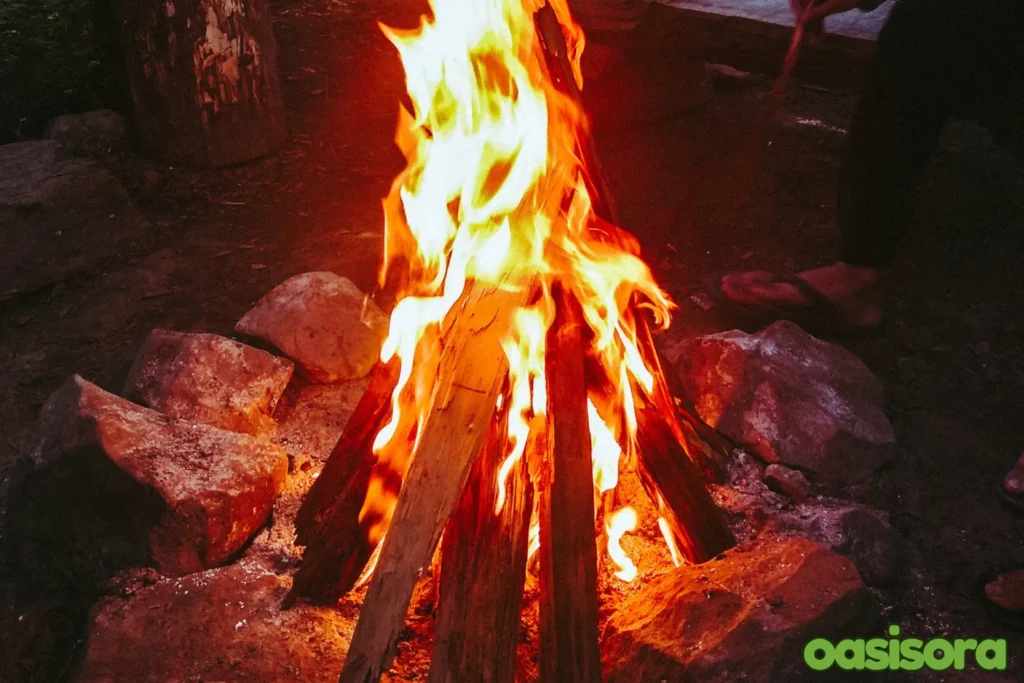
Stack Wood for Maximum Airflow
One of the best tips to reduce fire pit smoke is wood stacking. Your fire will burn better if you order your wood in a certain way.
When logs are arranged close together or placed messily, they block the wind and make it harder for the firework to get oxygen. This causes incomplete burning, which increases smoke emission.
Stacking your wood so that air can get through it can help you produce a clean and consistent burn. Two fast and valuable ways to do this are:
Teepee Method
Form smaller logs and kindling in a teepee-like cone form. This allows the flames to rise naturally and grabs new air from all sides, which allows the fire to burn cleaner and hotter.
Log Cabin Method
Set up two longer logs next to each other and stack shorter ones on top of them in a crossing manner. This creates gaps between the wood that allow airflow and maintain effective burning.
Tip 4: Use the Right Fire Starters

Use the Right Fire Starters
If you don’t know how to start your fire right, it could make more smoke. Many people start their fires with paper or treated wood, but these materials burn quickly and produce smoke.
You should use natural fire starters like dry twigs, small sticks, or wood items just to start fires. These things are easy to light on fire and help big logs burn quickly.
The secret is to start with small and increase gradually. Begin with kindling, little bits of dry wood that burn quickly and produce a powerful blaze instead of big logs straight away.
Gradually add bigger bits of wood after your kindling is burning continuously. This approach produces a minimum smoke and a consistent, well-regulated burn.
Tip 5: Consider the Wind Direction Before Lighting
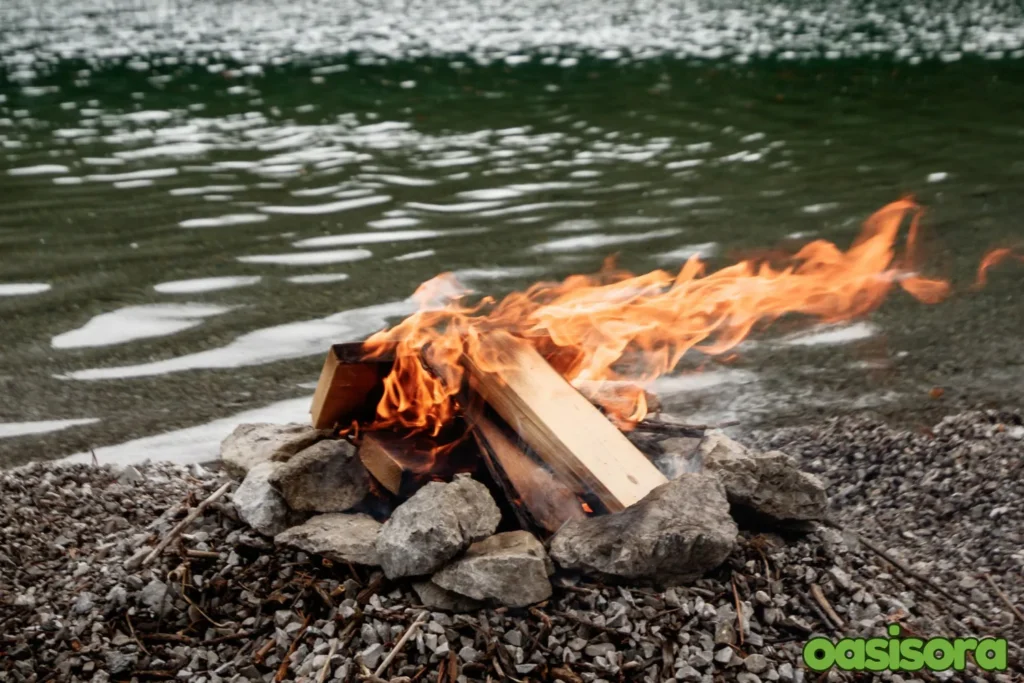
Check Wind Direction Before Lighting
So what if you do everything right? Wind can still blow smoke right into your face, making your fire pit experience unpleasant. Use these simple tips to keep the smoke away from you and your guests.
Firstly, find out the way of the wind before you start the fire. You can easily do this by blowing some leaves around or observing the direction of the wind. To regulate the smoke flow, you might have to rearrange your seats or set up a little barrier—such as a window.
Tip 6: Don’t Overfeed the Fire
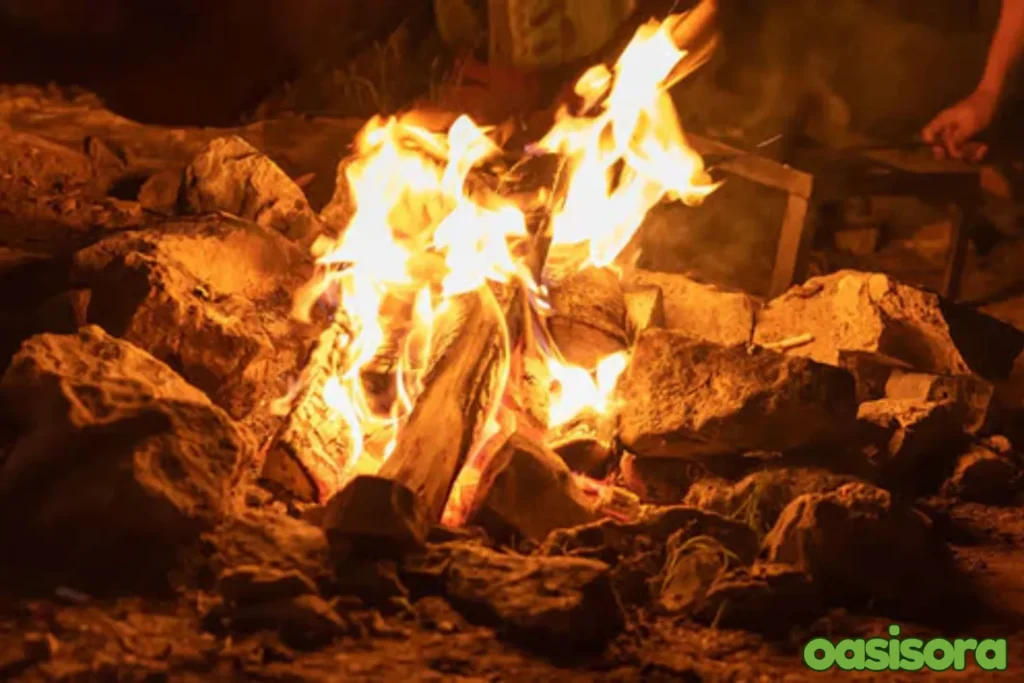
Don’t Overfeed the Fire
Although some believe that adding too much wood at once will keep the fire running, this is not always true. Overloading a fire with sticks lightens the flames and reduces the required heat level.
This produces more smoke rather than a clean and consistent burn. Add wood gradually for a steady flame. Before adding new logs, ensure that the old ones burn down completely. This keeps the fire strong, and clean and reduces smoke.
Tip 7: Store Wood Properly in a Dry, Covered Area

Store Wood in a Dry, Covered Area
It is best to keep your firewood smoke-free by drying it. Therefore, it is very important to store firewood correctly, because wet wood is harder to light and doesn’t make clear flames. Here are some ways to store wood:
- Wood should be kept in a dry place with enough airflow. You can keep wood inside a dry spot in your home. This will keep the rain and heat away from it.
- A garage or barn is another good option. They can offer shade and allow airflow, which keeps the wood dry.
- Store wood outside only if it is off the ground and in a firewood rack covered in a blanket or lid. This maintains the wonderful form of the firewood by preventing moisture.
Tip 8: Use Hardwoods Over Softwoods

Hardwoods for Fire Pit
Different types of wood affect the amount of smoke in a fire pit. So always choose hardwoods for it such as oak, maple, and hickory burn longer and produce less smoke. Softwoods like pine, fir, and cedar burn more quickly but produce more smoke.
The main reason is that they have more water and sap in them. Moreover, softwoods also leave more creosote, a sticky residue behind them, which is not ideal for fire pits.
Usually dried and seasoned oak is the best type of wood to burn as It lasts longer and burns cleaner.
Tip 9: Try a Chimney or Chiminea for Better Airflow

Chimney for Better Airflow
A chimney or chiminea can help if you’re sick of continuous smoke blowing in your face. Your fire pit experience will be much more pleasant if these structures funnel smoke upward rather than spread around.
The fire pit is small and has a tall chimney. It is kept in a wooden box. It blocks the flow of air, so the fire can burn hotter with less smoke
. A chimney can also help keep smoke away from people and improve airflow around your fire pit.
Tip 10: Consider Investing in a Smokeless Fire Pit or Gas Option
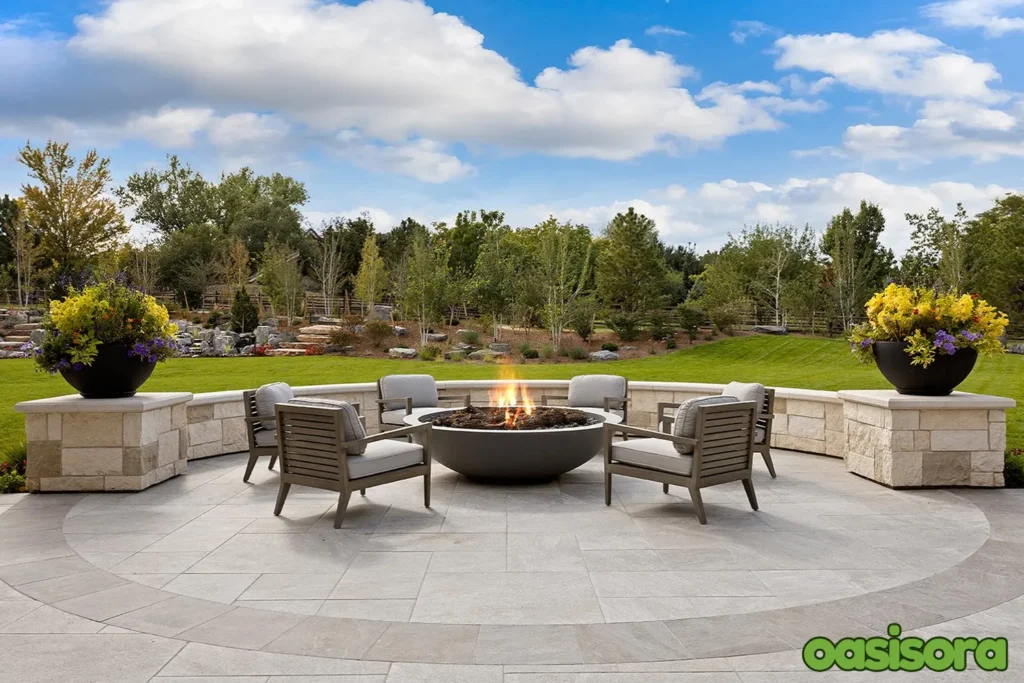
Smokeless Fire Pit or Gas Option
If you like fire-free smoke, there are dry fire pits and gas-powered choices that can be ideal for you. Unlike traditional fire pits, these choices require no maintenance, burn cleaner, and produce less smoke.
For those who prefer warmth and an atmosphere free of the hassle, gas or gas fire pits are perfect as they can be started instantly and release no smoke. There is no ash or remaining wood to remove, and easy to clean.
If you still want a wood-burning fire but wish less smoke, a smokeless fire pit could be an amazing option. These fire pits enable the fire to burn more effectively, so reducing the smoke output, due to their double-wall design and improved ventilation.
Whether you choose a wood fire pit free of smoke or a gas or propane fire pit, enjoying your outside space is simpler, cleaner, and more fun.
Conclusion
These great 10 tips to reduce fire pit smoke can make your time out more comfortable for lots of fun. No matter which fire pit you choose, traditional or modern fire pits, the goal is to enjoy the fire without smoke.
Clear fire pit experience cleans the air, which is good for you and your surroundings. If you use dry wood, stack it right, and clean it regularly, you can have a better fire with less smoke. These steps will make your fire pit a nice spot to hang out without making too much smoke.
FAQs
Which type of wood does not release too much smoke?
Ash, hickory, oak, maple, and other hardwoods are excellent in lowering smoke. They produce less smoke and burn more quickly.
What do I do to make sure my wood is dry?
Knocking two pieces of dry wood together makes a sharp clinking sound and is very light.
How often would you suggest I clean my fire pit?
You need to clean out the ash regularly to keep the air flowing.
After every month, clean your fire pit to keep it in good working order.
After every season, clean it once to keep it in great shape.
Why does my fire pit produce so much smoke?
Your fire pit makes more smoke when:
Using wet or unseasoned wood
Stacking logs too tightly
You don’t clean your fire pit regularly.
How do I keep my fire pit from smoking too much?
You can reduce smoke by:
Always use dry wood.
Keep your fire pit clean.
Arrange logs in a way that allows air to flow.
Check the wind direction before lighting the fire.
Is there a smoke-free fire pit option?
Yes! Gas and propane fire pits burn clean with no smoke because they don’t use wood.
How do I store firewood to keep it dry?
Make sure your firewood is off the ground and stored somewhere dry area.
If you keep it outside, leave the sides open and cover the top with a plastic sheet. This will allow the circulation of air.
Can I reduce smoke from my fire pit in windy conditions?
Yes! Block the direct wind with walls, fences, or trees; keep your fire pit out of this path. Always note the direction of the wind before starting a fire.
Do fire pit grates really help with reducing smoke?
Yes! In a fire pit, the grates raise the wood above the ground so air may pass through it.
Which things can I use to start a fire?
Leaves, newspaper, pine needles, or dry sticks will work. Good fuel speeds up the fire’s start and lowers the need for too much smoke-making wood.
What is the difference between a regular and smokeless fire pit?
A regular fire pit burns wood in the usual way and makes a lot of smoke. A smokeless fire pit, on the other hand, burns wood more effectively, so there is less smoke and a clean fire
